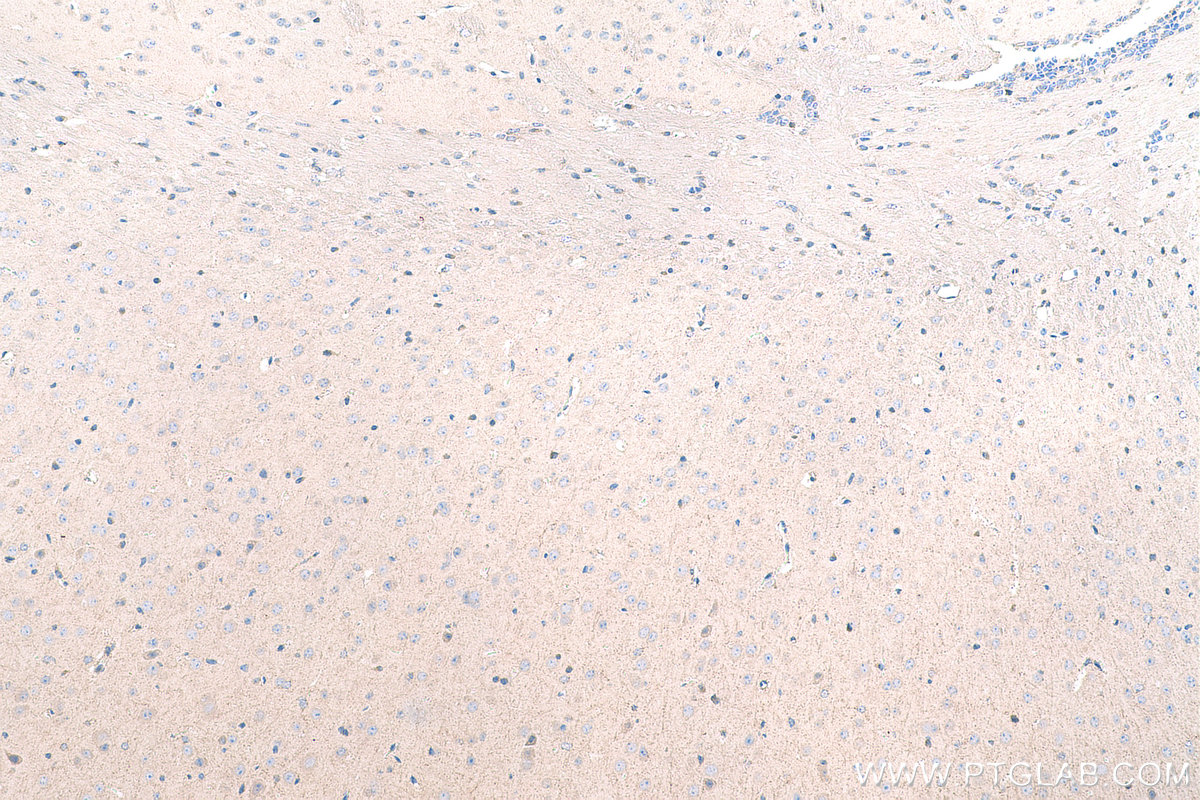- Featured Product
- KD/KO Validated
STAU1 Polyclonal antibody
STAU1 Polyclonal Antibody for WB, IHC, IF/ICC, IP, ELISA
Host / Isotype
Rabbit / IgG
Reactivity
human, mouse, rat and More (1)
Applications
WB, IHC, IF/ICC, IP, ELISA and More (2)
Conjugate
Unconjugated
验证数据展示
经过测试的应用
| Positive WB detected in | human brain tissue, K-562 cells, mouse brain tissue |
| Positive IP detected in | mouse brain tissue |
| Positive IHC detected in | mouse brain tissue, mouse pancreas tissue Note: suggested antigen retrieval with TE buffer pH 9.0; (*) Alternatively, antigen retrieval may be performed with citrate buffer pH 6.0 |
| Positive IF/ICC detected in | A549 cells |
推荐稀释比
| Application | Dilution |
|---|---|
| Western Blot (WB) | WB : 1:500-1:3000 |
| Immunoprecipitation (IP) | IP : 0.5-4.0 ug for 1.0-3.0 mg of total protein lysate |
| Immunohistochemistry (IHC) | IHC : 1:500-1:2000 |
| Immunofluorescence (IF)/ICC | IF/ICC : 1:200-1:800 |
| It is recommended that this reagent should be titrated in each testing system to obtain optimal results. | |
| Sample-dependent, Check data in validation data gallery. | |
产品信息
14225-1-AP targets STAU1 in WB, IHC, IF/ICC, IP, RIP, ELISA applications and shows reactivity with human, mouse, rat samples.
| Tested Applications | WB, IHC, IF/ICC, IP, ELISA Application Description |
| Cited Applications | WB, IHC, IF, RIP |
| Tested Reactivity | human, mouse, rat |
| Cited Reactivity | human, mouse, pig |
| Immunogen | STAU1 fusion protein Ag5464 种属同源性预测 |
| Host / Isotype | Rabbit / IgG |
| Class | Polyclonal |
| Type | Antibody |
| Full Name | staufen, RNA binding protein, homolog 1 (Drosophila) |
| Synonyms | STAU, Double-stranded RNA-binding protein Staufen homolog 1 |
| Calculated Molecular Weight | 63 kDa |
| Observed Molecular Weight | 55 kDa |
| GenBank Accession Number | BC050432 |
| Gene Symbol | STAU1 |
| Gene ID (NCBI) | 6780 |
| RRID | AB_2302744 |
| Conjugate | Unconjugated |
| Form | Liquid |
| Purification Method | Antigen affinity purification |
| UNIPROT ID | O95793 |
| Storage Buffer | PBS with 0.02% sodium azide and 50% glycerol pH 7.3. |
| Storage Conditions | Store at -20°C. Stable for one year after shipment. Aliquoting is unnecessary for -20oC storage. |
背景介绍
实验方案
| Product Specific Protocols | |
|---|---|
| WB protocol for STAU1 antibody 14225-1-AP | Download protocol |
| IHC protocol for STAU1 antibody 14225-1-AP | Download protocol |
| IF protocol for STAU1 antibody 14225-1-AP | Download protocol |
| IP protocol for STAU1 antibody 14225-1-AP | Download protocol |
| Standard Protocols | |
|---|---|
| Click here to view our Standard Protocols |
发表文章
| Species | Application | Title |
|---|---|---|
Nature hiCLIP reveals the in vivo atlas of mRNA secondary structures recognized by Staufen 1.
| ||
Cell Metab NEAT1 is essential for metabolic changes that promote breast cancer growth and metastasis. | ||
Mol Cell Gain of Additional BIRC3 Protein Functions through 3'-UTR-Mediated Protein Complex Formation. | ||
Nat Commun Genome-wide enhancer-gene regulatory maps link causal variants to target genes underlying human cancer risk | ||
Nucleic Acids Res Comprehensive analysis of the BC200 ribonucleoprotein reveals a reciprocal regulatory function with CSDE1/UNR. |








